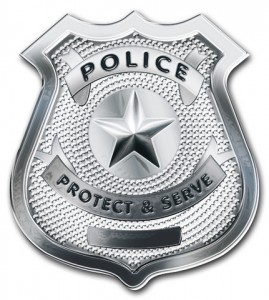Lack of wine care gets my dander up
 I’ve said it many times before: My intention is never to come across as the wine police. I don’t have a wine thermometer, Oxford Companion or vintage chart tucked away in my purse. But several of my most irritating wine peeves continue to happen. So call this a venting column or a call for some sort of citizen wine watch to bring attention to the issues.
I’ve said it many times before: My intention is never to come across as the wine police. I don’t have a wine thermometer, Oxford Companion or vintage chart tucked away in my purse. But several of my most irritating wine peeves continue to happen. So call this a venting column or a call for some sort of citizen wine watch to bring attention to the issues.
Last week I was researching single-serving bottles as value options. As I was tasting the first pinot grigio I was shocked at the poor quality of the wine and its almost undrinkable state.
Confusion set in because it was a reliable brand, and more importantly, it is very rare to find such obvious faults in modern wines. However, the mystery was quickly solved as I looked at the bottle closer to see it was a 2009 vintage – grotesquely past its prime.
It wasn’t so much my own experience that frustrated me – tasting wine is part of the job – but knowing someone new to wine would quite possibly never drink wine again after that single bottle.
So, a quick review on age and wine. Very few white wines are produced to improve with age and most deteriorate quickly. Many mid-market chardonnays are made from very ripe grapes with low acid and added oak dimensions, making them unpleasant when the fruit flavors diminish. Light-bodied wines like sauvignon blanc and pinot grigio are enjoyed because of the refreshing, fruity and zippy acid. After just a year or two of their release, most will lose these traits.
My advice is the same for dining out and retail shopping. For everyday-drinking white wines, buy the most recent vintage. Be sure that if you ordered a 2010 from the wine list you are not served a 2008. Reputable restaurants and retailers take their wine inventory seriously and rotate out any bottles that are losing their luster; less reputable ones may just be moving out inventory.
Another grievance is serving wines too warm or too cold. This is definitely a subject on which you have heard me preach before. Recently, my husband and I sat down at a restaurant to enjoy a lovely dinner paired with an exceptional favorite bottle of wine. Our red wine was on the extreme side of warm, borderline hot. This issue isn’t a matter of wine snobs setting out to argue with the sommelier; wines served too warm or too cold simply are not enjoyable.
The technical explanation is that the right serving temperature is intended to bring out a wine’s depth of taste.Red wines that are too warm lose fruitiness and structure, leaving only the taste of tannin and alcohol. White wine served too cold rarely has much flavor at all. For many of us, wine is an essential part of a pleasurable dining experience, so don’t be too intimidated to ask your waiter to slightly cool your red wine if it is too warm, or to request that a white be served at the proper temperature. There’s no need to pull out your wine thermometer; simply let your preference and palate guide you.
And finally, as tempting as it may be, don’t add ice cubes to hasten chilling. A good quality wine has a balance of water, sugar, acid, tannin and alcohol. Adding ice will destroy this balance and ruin the wine.
 Acting as the wine police when dining out is the last of my intentions. But several times in the past few months, the question of a wine’s temperature has marred my dining experience. Not that I have a wine thermometer tucked in my handbag, but when wines are served too warm or too cold they lose their luster.
Acting as the wine police when dining out is the last of my intentions. But several times in the past few months, the question of a wine’s temperature has marred my dining experience. Not that I have a wine thermometer tucked in my handbag, but when wines are served too warm or too cold they lose their luster.